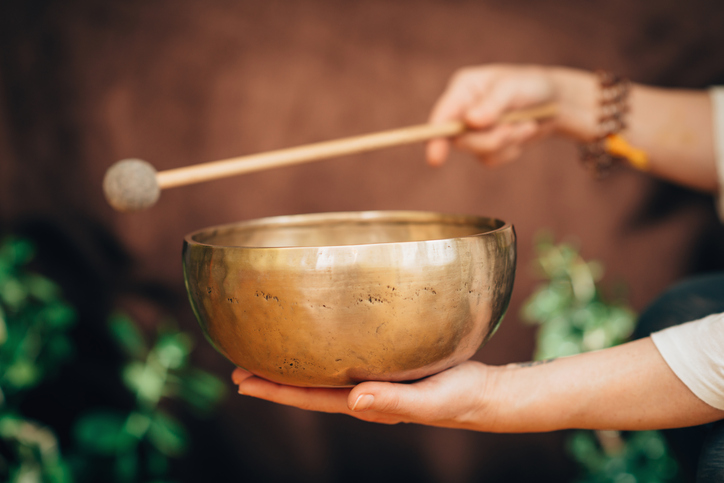Breathwork For Energy And Vitality
Breathwork is a powerful wellness practice that involves controlled breathing techniques to boost energy, focus, and vitality. By consciously altering our breath, we can increase oxygen flow, reduce stress and enhance mental clarity. Breathwork can naturally elevate energy levels and support overall well-being.
What is Breathwork?
Breathwork encompasses various practices and techniques focused on conscious, controlled breathing. While breathing is an automatic function, breathwork teaches us to harness and control our breath to achieve specific outcomes. Some methods are calming, while others are invigorating and some can even bring about altered states of consciousness. Breathwork is rooted in ancient traditions, such as pranayama in yoga and has evolved into modern therapeutic practices that blend ancient wisdom with scientific insights.
How Breathwork Enhances Energy and Vitality
The way we breathe directly impacts the amount of oxygen in our blood and in turn, affects energy levels and mental clarity. By practicing breathwork, you’re able to oxygenate your cells more effectively, reduce stress hormones and stimulate the parasympathetic nervous system, which can increase energy, focus and a sense of vitality. Specific breathwork techniques can help “wake up” the body and mind, boosting alertness and vigor.
Where and How Breathwork Can Be Used
Breathwork can be practiced almost anywhere—at home, in nature, at the office, or in a dedicated wellness setting. It’s versatile, making it accessible to people in various situations. Here are some contexts in which breathwork can be particularly beneficial:
•Morning Routine: Start the day with energizing breathwork, setting a positive and focused tone.
•Midday Boost: A quick breathing session can combat afternoon fatigue, providing a natural energy lift.
•Before Exercise: Preparing with breathwork can increase oxygen flow to muscles, enhancing physical performance.
•Stress Relief: Anytime you feel overwhelmed or stressed, calming breathwork techniques can help reset your nervous system.
•Meditation and Spiritual Practices: Breathwork is often used to deepen meditation or aid in spiritual growth.
Popular Breathwork Techniques for Energy and Vitality
Several breathwork techniques can enhance energy, focus, and vitality. Here are a few you can try:
Box Breathing (Square Breathing): This method involves inhaling, holding, exhaling and holding the breath again, each for a count of four. It’s calming yet can enhance focus, making it ideal for a quick mental boost.
Wim Hof Method: Named after the “Iceman” Wim Hof, this technique involves rapid, deep inhalations and exhalations followed by breath-holding. Known for its energizing and even euphoric effects, it’s great for stimulating vitality and endurance.
Kapalabhati (Skull Shining Breath): This ancient pranayama technique involves short, sharp exhales through the nose, with passive inhales. It’s invigorating, helping to release toxins and energize the mind.
Alternate Nostril Breathing (Nadi Shodhana): This technique, common in yoga, involves closing off one nostril while breathing through the other. It can calm the mind, improve focus and balance energy.
4-7-8 Breathing: Developed by Dr. Andrew Weil, this technique involves inhaling for a count of four, holding for seven, and exhaling for eight. This practice is grounding but can also boost oxygen levels, creating a balanced energy.
Benefits of Breathwork
Breathwork offers a range of benefits, from physical to emotional. Here’s what you can expect with consistent practice:
•Increased Energy and Focus: Enhanced oxygen flow increases vitality, alertness and concentration.
•Reduced Stress and Anxiety: Breathwork stimulates the parasympathetic nervous system, which can lower cortisol levels and relieve tension.
•Improved Physical Performance: Increased oxygen and lung capacity can benefit stamina and endurance in exercise.
•Emotional Release: Some forms of breathwork can bring suppressed emotions to the surface, allowing for emotional release and healing.
•Better Sleep: Breathwork before bed can aid relaxation, helping you fall asleep faster and achieve deeper rest.
•Enhanced Mindfulness: The focus on breath naturally draws attention inward, fostering mindfulness and presence.
•Boosted Immune System: Some breathwork techniques can improve circulation, oxygenate cells, and support immune health.
Potential Drawbacks of Breathwork
While breathwork is generally safe, there are some potential drawbacks and risks to consider:
•Dizziness or Lightheadedness: Some techniques, particularly those involving rapid breathing, can lead to hyperventilation, causing lightheadedness or tingling sensations.
•Emotional Discomfort: Breathwork, especially intense forms like holotropic breathing, can bring up suppressed emotions. This can be therapeutic but may also be overwhelming if you’re not prepared.
•Physical Discomfort: In some cases, breathwork can cause temporary discomfort in the chest or abdomen. It’s crucial to ease into it, especially if you’re new.
•Not Suitable for Everyone: Certain people, including those with cardiovascular issues, respiratory conditions, or mental health challenges, may need to approach breathwork cautiously or avoid specific techniques. It’s always best to consult a healthcare provider if you have health concerns.
Getting Started with Breathwork
If you’re interested in incorporating breathwork into your routine, here are some tips to help you get started:
Set an Intention: Begin each session by setting a clear intention—whether it’s to gain energy, reduce stress, or cultivate mindfulness.
Choose a Technique: Start with simpler techniques like Box Breathing or 4-7-8 Breathing. As you get comfortable, you can explore more advanced methods like Wim Hof or Kapalabhati.
Practice Consistently: Try to practice daily, even if just for five minutes. Consistency is key to experiencing the full benefits.
Be Mindful of Your Body: Listen to your body, especially if you’re new to breathwork. If you feel uncomfortable, pause and try a gentler approach.
Consider Guidance: For certain techniques, particularly more intense practices, working with a certified breathwork instructor can be helpful, ensuring you practice safely and effectively.
Breathwork is a powerful yet accessible tool for enhancing energy, mental clarity and overall well-being. From the ancient pranayama techniques to modern-day practices, breathwork offers something for everyone. As you explore breathwork, you’ll likely find that the simple act of breathing with intention can open doors to greater vitality, resilience and inner peace.







